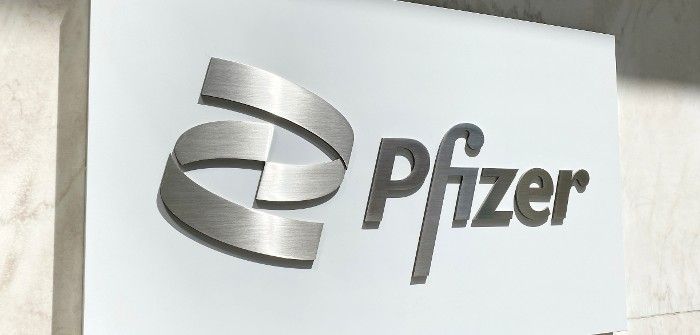FDA Authorized Pfizer's COVID-19 Bivalent Vaccine for 6 Months to 4 Years
Pfizer's COVID-19 vaccine must be administered at least 2 months after the primary vaccination series.
Pfizer
(Adobe Stock, anon)

This article first appeared on ContemporaryPediatrics.com
The FDA has just approved a booster dose of the Pfizer-BioNTech COVID-19 vaccine for children aged 6 months through 4 years. The booster dose must be administered at least 2 months after the competition of the primary vaccination, with 3 doses of the single strain vaccine.
"This is fantastic news," notes Tina Tan, MD, FAAP, FIDSA, FPIDS, editor-in-chief of Contemporary Pediatrics®. "This will allow us to provide optimal protection to the pediatric population aged between 6 months to 4 years against COVID disease and the current subvariants that are circulating."
Kevin Kavanagh, MD, founder and board chairman of Health Watch USA, and Infection Control Today®’s Editorial Advisory Board member, agrees. “Even though children are at a much lower risk for severe disease, there is significant concern that they can spread the virus to others. In Sweden, early on in December 2020, 75% of the nonhealth care outbreaks were in elementary (45%), nursery (20%), and grammar (12%) schools. In addition, children can still develop long COVID along with severe disease. According to findings in a systematic review and meta-analyses by Sepulveda et al long COVID can develop in 25% of children, with the most prevalent manifestations being mood symptoms, fatigue, and sleep disorders.”
Children of this age group who received the first 2 doses of the monovalent Pfizer-BioNTech COVID-19 vaccine should have completed their 3-dose primary series with the Pfizer-BioNTech COVID-19 vaccine, bivalent. These children would not be eligible for a booster dose of a bivalent vaccine, as they should already have protection against serious COVID-19 consequences. This authorization targets the children who completed their 3-dose primary vaccination series with the monovalent Pfizer-BioNTech COVID-19 vaccine before the Pfizer-BioNTech COVID-19 vaccine, bivalent was authorized to provide the third dose in the 3-dose primary series.
The FDA decided on this approval from several clinical studies, including one which evaluated primary vaccination with the monovalent Pfizer-BioNTech COVID-19 vaccine in children aged 6 months and older; those which evaluated booster vaccination with monovalent Pfizer-BioNTech COVID-19 vaccine in children aged 5 years and older; a study that looked at a booster dose with Pfizer-BioNTech’s investigational bivalent COVID-19 vaccine (original and omicron BA.1) in those greater than 55 years of age; and postmarketing safety data with the monovalent Pfizer -BioNTech COVID-19 vaccine and Pfizer-BioNTech COVID-19 vaccine, bivalent, among other studies. Safety data accrued with the investigational bivalent vaccine and with the monovalent Pfizer-BioNTech COVID-19 vaccine was relevant to the Pfizer-BioNTech COVID-19 vaccine bivalent because the vaccines are created in the same way.
Additionally, the Pfizer-BioNTech COVID-19 vaccine, bivalent, includes an mRNA component that corresponds to the original virus strain and provides an immune response that is protective against COVID-19 and an mRNA component corresponding to the omicron variant BA.4 and BA.5 lineages. This component provides robust protection against the Omicron variant of COVID-19.
The bivalent booster is beneficial, Kavanagh explains. "SARS-C0V-2 can not only cause acute disease but also Long COVID. In addition, there are concerns regarding long-term cardiac disease and immunosuppression which manifests with respiratory syncytial virus and streptococcal infections. Thus, bivalent boosting of children should be strongly considered to help avoid these complications and possibly mitigate the spread to caregivers. Because of possible immune imprinting concerns, using a bivalent formulation for initial vaccination and boosting is important. The bivalent formulation for the initial vaccine doses is not yet available.”
Reference
Coronavirus (COVID-19) update: FDA authorizes bivalent Pfizer-BioNTech COVID-198 vaccine as booster dose for certain children 6 months through 4 years of age. US Food & Drug Administration. March 15, 2023. Accessed March 15, 2023. https://www.fda.gov/news-events/press-announcements/coronavirus-covid-19-update-fda-authorizes-bivalent-pfizer-biontech-covid-19-vaccine-booster-dose?utm_medium=email&utm_source=govdelivery
Uncovering a Hidden Risk: Alcohol Use Disorder Significantly Increases C difficile Infection Rates
April 10th 2025A groundbreaking study reveals a strong connection between alcohol use disorder and increased risk for Clostridioides difficile infection, challenging traditional assumptions and calling for enhanced infection prevention protocols.
Bridging the Gap: Operating Room and Central Processing Unite to Improve Surgical Efficiency
April 8th 2025Communication breakdowns between the operating room and central processing led to delays and frustration—until collaboration, cross-training, and shared goals turned metrics around and strengthened teamwork.
Uncovering a Hidden Risk: Alcohol Use Disorder Significantly Increases C difficile Infection Rates
April 10th 2025A groundbreaking study reveals a strong connection between alcohol use disorder and increased risk for Clostridioides difficile infection, challenging traditional assumptions and calling for enhanced infection prevention protocols.
Bridging the Gap: Operating Room and Central Processing Unite to Improve Surgical Efficiency
April 8th 2025Communication breakdowns between the operating room and central processing led to delays and frustration—until collaboration, cross-training, and shared goals turned metrics around and strengthened teamwork.
2 Commerce Drive
Cranbury, NJ 08512